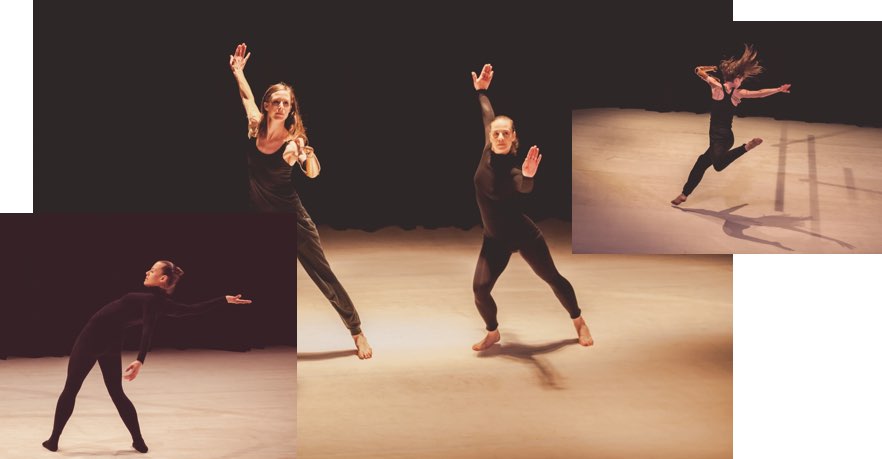Where Does Movement Come From?
Dancer and writer Dayita Nereyeth searches for the source of contemporary dance movement through her own practice and Tahnun Ahmedy’s solo work at the Biennial
I’ve recently become fascinated with improvisation and have come to see our bodies as storehouses of past experiences and present realities: every movement made has history. I’ve also begun to meditate on the birth of movement and the turning point that sets it as choreography. Moving in a certain way sparks old memories, evokes musical scores, and unearths emotions. I notice when I improvise, my body frequently returns to phrases and patterns I’ve danced many times. These become a movement template and even their slight variations continuously ingrain themselves in my muscle memory. There’s almost this sense of having to revisit the patterns to work them out. While there is comfort in predicting the playing out of a known phrase of movement, it can be difficult to move away from the familiar. I’m intrigued by how we discover novel pathways, especially in the context of creating and performing dance for an audience.
Movement patterns become more apparent while watching the choreography of a dance work, and we seem to automatically recognise and categorise these sequences. We constantly try to make sense of dance using our instinct and ‘learned understanding’ of effective choreography. Having begun understanding the patterns within my own movement practice, I’m curious about other performers and their challenge of working through habitual patterns to find new movement. With this in mind, I spoke to Tahnun Ahmedy about his choreographic process and the persisting influence of his training in Kathak on his contemporary dance work today.
Tahnun’s programme note for Samrakshana, his solo at the FACETS choreography residency showing, drew me to his work. In the note, he speaks of restrictions, struggles, and his tools to overcome them. His work explores the reaction of his body and mind to imposed limitations. “We all experience blocks in our bodies and minds, which ultimately restricts our souls”, he says.


In his solo, Tahnun moves between Kathak and a fairly recognisable form of contemporary dance, which isn't always as mature in execution and at times comes across as diligently executed but self-conscious. It echoes his attempt to move beyond his own classical roots, which is clearly the origin point of his personal movement language. Though his limited training in contemporary dance poses some restrictions, his willingness to explore the form and new ideas is apparent. One of the recurring patterns of his work is the feet stomping from the Kathak vocabulary that contributes to a canvas of sound created by his feet and voice. It does take some time for the work to build a rhythmic base, but once the repetitions merge, they allow us to see slight variations that become their own sparse rhythm and open up different movement possibilities.
It is hard to ignore the strength and confidence of the more traditional Kathak phrases in the performance. Tahnun stays true to the precision of his training in Kathak in the rapid turns and rhythmic stomping. His absolute ownership of these Kathak sequences is comforting and emanates confidence and certainty. It makes me wonder whether the surety of his classical movement comes from his personal rigour or from the centuries-old tradition itself. Or perhaps contemporary dance is much younger and hasn't had the same years of incubation and honing in Bangladesh and in Tahnun's body. The discrepancy is clear. Although Tahnun sets out to avoid copying contemporary dance as it is known in the West, his work has moments of the virtuosic that are neither inherent to Kathak or his own personal language. He doesn’t want to follow a set technique of contemporary dance, so perhaps he inadvertently reaches for something that is known, which might present a hurdle in his future works.
While I’ve been fascinated with the starting point of movement as a going back to familiar patterns, deviations, extensions, and other permutations, it is interesting to hear Nina Hümpel, the director of the München Dance Festival, talk at one of the Biennial’s auxiliary events and offer another possibility. She says, “the most honest movement reveals itself when a dancer is most exhausted”. Her words resonate with me as I continue to ponder points of initiation in my own work and the works of my peers.







